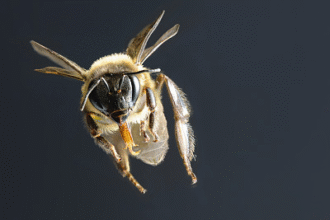Emphysema: Overview
Emphysema is a chronic, progressive form of chronic obstructive pulmonary disease (COPD) characterized by irreversible enlargement of the airspaces distal to the terminal bronchioles and destruction of their walls without obvious fibrosis. This leads to loss of elastic recoil, air trapping, and impaired gas exchange.
Epidemiology and Risk Factors
- Global Prevalence: COPD, including emphysema, affects over 250 million people worldwide and is a leading cause of morbidity and mortality.
- Age and Smoking: Prevalence increases with age; 80–90% of emphysema cases in developed countries are attributed to tobacco smoking.
- Environmental Exposures: Biomass fuel smoke, air pollution, occupational dusts, and fumes.
- Genetic Predisposition: Alpha-1 antitrypsin deficiency (AATD) accounts for up to 2% of cases; homozygous AATD leads to early-onset panacinar emphysema.
- Other Factors: Recurrent pulmonary infections, low socioeconomic status, and childhood respiratory illnesses.
Pathogenesis
- Protease–Antiprotease Imbalance
- Cigarette smoke and pollutants activate neutrophils and macrophages to release proteases (e.g., neutrophil elastase, MMPs).
-
Oxidative stress inactivates alpha-1 antitrypsin, diminishing inhibition of proteolytic enzymes and leading to alveolar wall destruction.
-
Oxidative Stress and Inflammation
-
Reactive oxygen species from smoke and inflammatory cells injure epithelial and endothelial cells, perpetuating inflammation.
-
Mechanical Factors and Airflow Limitation
- Air trapping increases residual volume, causing alveolar overdistension and rupture of septa, forming bullae.
Clinical Presentation
- Dyspnea: Progressive shortness of breath, initially on exertion then at rest.
- Chronic Cough and Sputum: Often present when emphysema overlaps with chronic bronchitis.
- Wheezing and Chest Tightness: Due to airway collapse and hyperinflation.
- Barrel Chest and Hyperresonance: Physical exam findings in advanced disease.
- Weight Loss and Muscle Wasting: Increased work of breathing contributes to cachexia.
Diagnosis
- Spirometry: FEV₁/FVC ratio <0.70 post-bronchodilator confirms airflow obstruction.
- Imaging:
- High-resolution CT (HRCT): Shows low attenuation areas, bullae, and airway wall changes.
- Chest X-Ray: May reveal hyperlucent fields, flattened diaphragms, and increased retrosternal airspace.
- Laboratory Tests:
- Serum AAT levels and phenotype for suspected AATD.
- Arterial blood gases in advanced disease assess hypoxemia/hypercapnia.
- Functional Assessment:
- Six-minute walk test (6MWT) evaluates exercise tolerance.
Management
1. Smoking Cessation
- Most effective intervention to slow disease progression.
- Behavioral therapy and pharmacologic aids: nicotine replacement, varenicline.
2. Pharmacotherapy
- Bronchodilators:
- Short-acting (SABA/SAMA) for relief.
- Long-acting (LABA/LAMA) for maintenance.
- Inhaled Corticosteroids:
- For patients with frequent exacerbations and elevated eosinophil counts.
- Phosphodiesterase-4 Inhibitors:
- Roflumilast for severe disease with chronic bronchitis phenotype.
3. Pulmonary Rehabilitation
- Structured exercise training, education, and psychosocial support to improve symptoms and quality of life.
4. Oxygen Therapy
- Long-term oxygen for resting hypoxemia (PaO₂ ≤55 mmHg or SaO₂ ≤88%).
5. Interventional and Surgical Options
- Lung Volume Reduction Surgery (LVRS): Resection of diseased tissue in selected patients.
- Bronchoscopic Interventions: Endobronchial valves or coils to reduce hyperinflation.
- Lung Transplantation: Considered for advanced disease refractory to other treatments.
Complications
- Respiratory Failure: Progressive hypoxemia and hypercapnia.
- Pulmonary Hypertension: Resulting from chronic hypoxia.
- Cor Pulmonale: Right heart failure secondary to pulmonary hypertension.
- Frequent Exacerbations: Increase morbidity and mortality.
Prevention and Patient Education
- Vaccinations: Annual influenza and pneumococcal vaccines to prevent infections.
- Environmental Control: Avoid exposure to smoke, dust, and pollutants.
- Nutritional Support: Balanced diet to maintain body weight and muscle mass.
- Self-Management: Inhaler technique, recognizing exacerbation signs, and action plans.
Prognosis and Follow-Up
- Disease trajectory varies; predicted by FEV₁ decline, exacerbation frequency, and comorbidities.
- Regular monitoring: spirometry, symptom assessment, and exercise tolerance.
References
- Global Initiative for Chronic Obstructive Lung Disease (GOLD) report, 2025.
- Barnes PJ, et al. Pathophysiology of emphysema. N Engl J Med. 2022.
- Stockley RA. Alpha-1 antitrypsin deficiency and emphysema. Eur Respir J. 2023.







